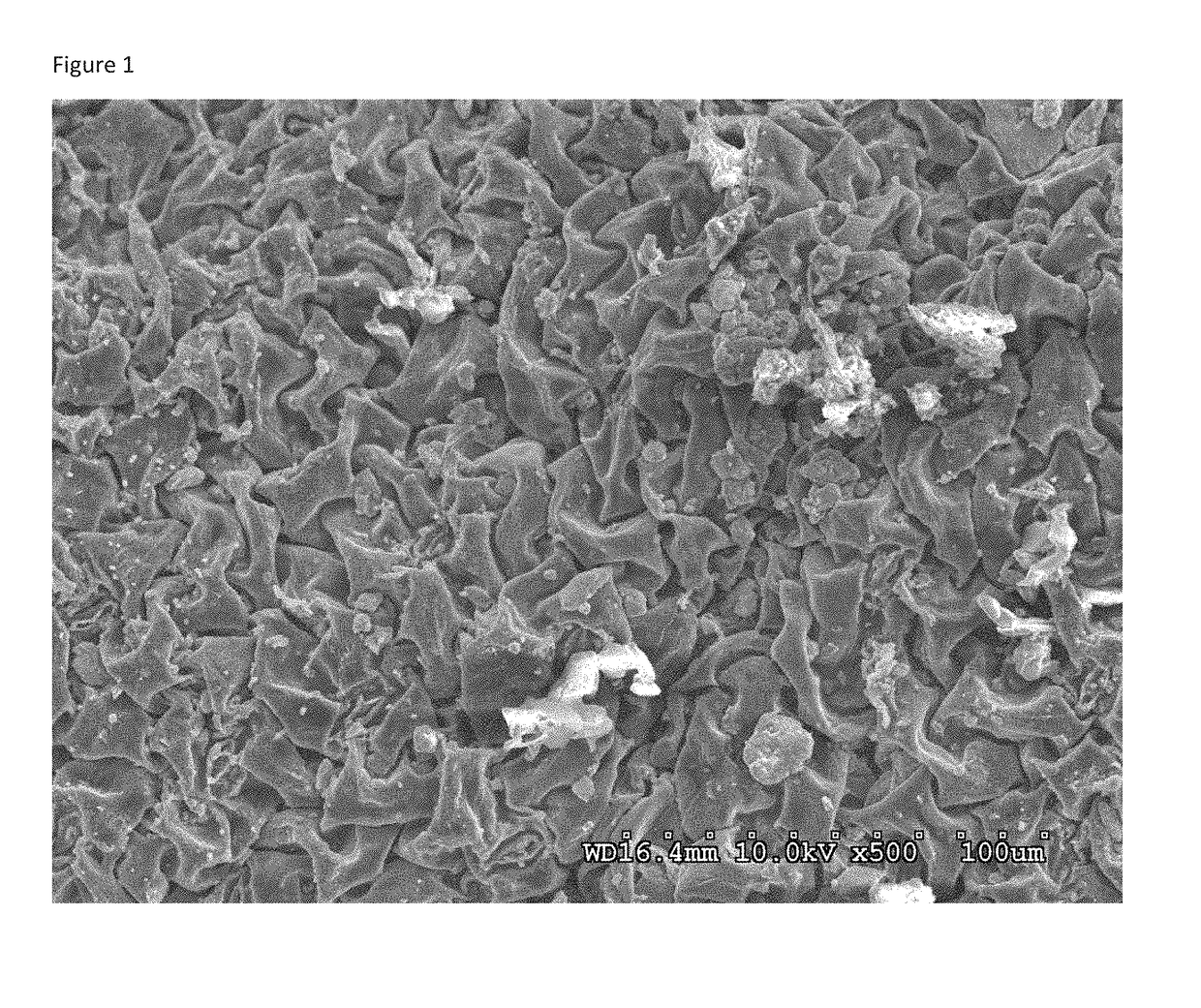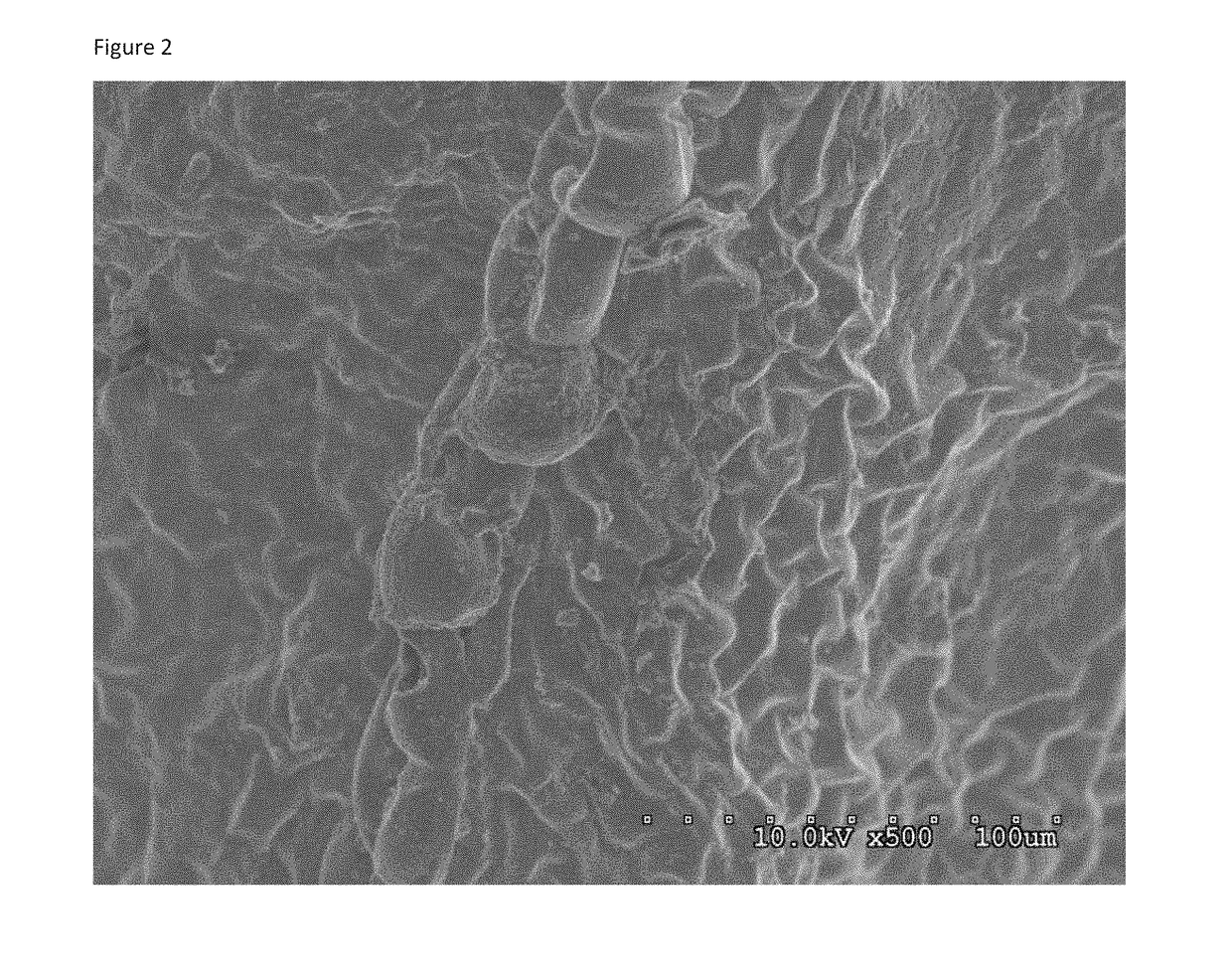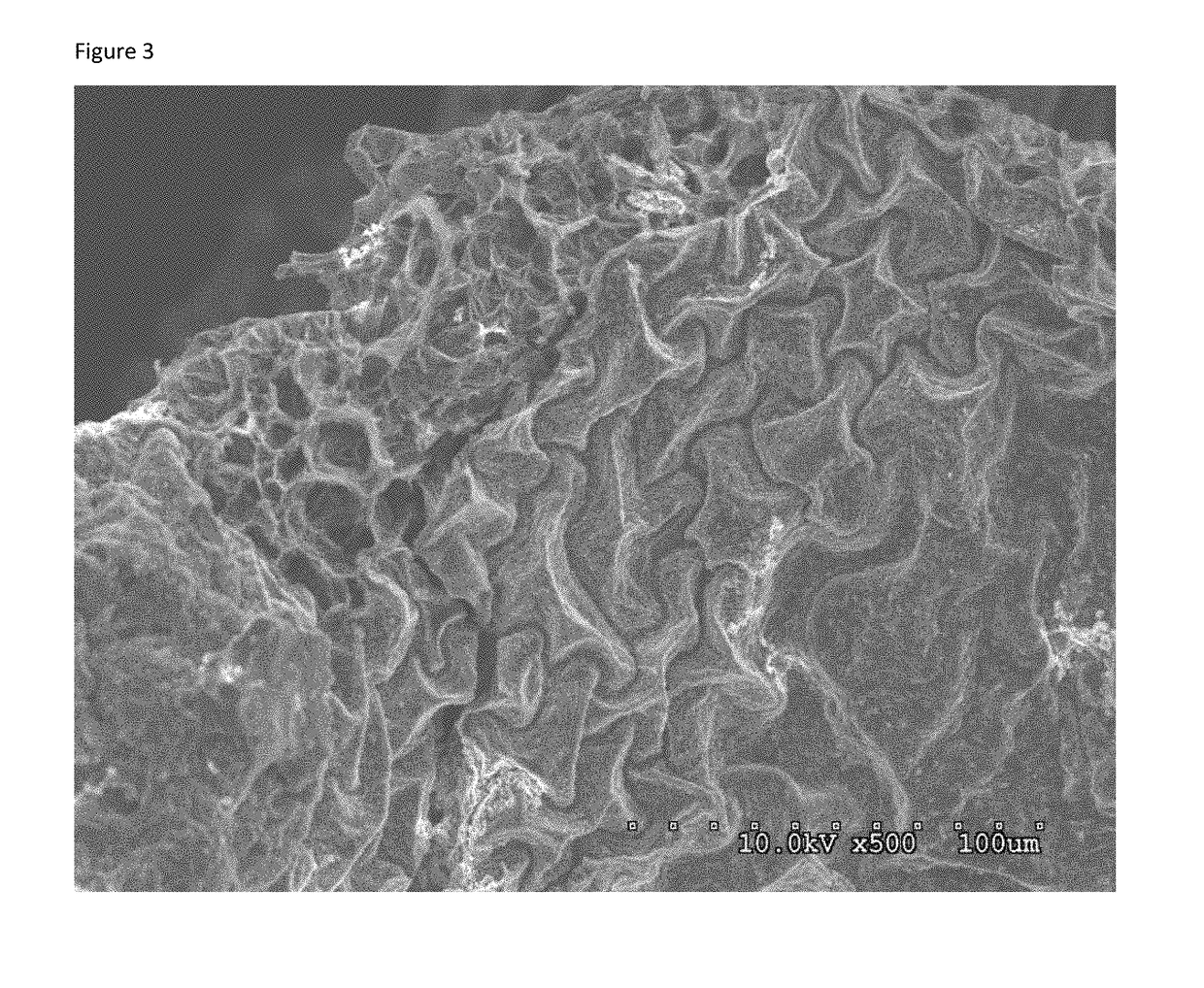Biochar and methods of removing contaminants from water
a technology of biochar and contaminants, applied in the field of remediation, can solve the problems of heavy metals, environmental hazards and human health concerns, cancer, nerve damage, and ultimately death, and achieve the effects of reducing the number of toxic substances
- Summary
- Abstract
- Description
- Claims
- Application Information
AI Technical Summary
Benefits of technology
Problems solved by technology
Method used
Image
Examples
example 1 (
1)
[0028]80 ml of 1 ppm lead contaminated water was poured into 2 labeled beakers. One teaspoon of Cilantro biochar (0.489 grams) material was added to each beaker. After 30 minutes about 15 ml of water was decanted off from each of the beakers into disposable cups lined with coffee filter to filter any solids out. The filtered water was poured into labeled test vials for elemental analysis to measure lead levels. The process was repeated after 2 hours and 24 hours resulting in 6 vials total.
[0029]Elemental analysis for lead was conducted on Thermo Scientific (Trade Mark) iCAP 7000 series ICP Spectrometer. Average ICP lead content for the 1 ppm reference solution was measured to be 1.072 ppm
[0030]Table 2 shows the ICP data on average lead content after three time intervals: 30 min, 2 hours and 24 hours.
ppm Leadppm Leadppm LeadExampleMaterialat 30 minat 2 hoursat 24 hoursC-1Brita0.459 ppm0.277 ppmUndetectablefilter(C-2Cilantro1.072 ppm1.032 ppm1.071 ppmleaves1CilantroUndetectableUndet...
example 2 (
2)
[0037]80 ml of 1.7 ppm lead contaminated water was poured into 2 labeled beakers. One tablespoon Parsley biochar was added to the two beakers. After 24 hours about 15 ml of water was decanted off from each of the beakers into disposable cups lined with coffee filter to filter any solids out. The filtered water was poured into labeled test vials for elemental analysis to measure lead levels.
example 3 (
3)
[0038]80 ml of 1.7 ppm lead contaminated water was poured into 2 labeled beakers. One tablespoon Carrot tops biochar was added to the two beakers. After 24 hours about 15 ml of water was decanted off from each of the beakers into disposable cups lined with coffee filter to filter any solids out. The filtered water was poured into labeled test vials for elemental analysis to measure lead levels.
PUM
| Property | Measurement | Unit |
|---|---|---|
| Specific surface area | aaaaa | aaaaa |
| Surface area | aaaaa | aaaaa |
Abstract
Description
Claims
Application Information
 Login to View More
Login to View More - R&D
- Intellectual Property
- Life Sciences
- Materials
- Tech Scout
- Unparalleled Data Quality
- Higher Quality Content
- 60% Fewer Hallucinations
Browse by: Latest US Patents, China's latest patents, Technical Efficacy Thesaurus, Application Domain, Technology Topic, Popular Technical Reports.
© 2025 PatSnap. All rights reserved.Legal|Privacy policy|Modern Slavery Act Transparency Statement|Sitemap|About US| Contact US: help@patsnap.com



